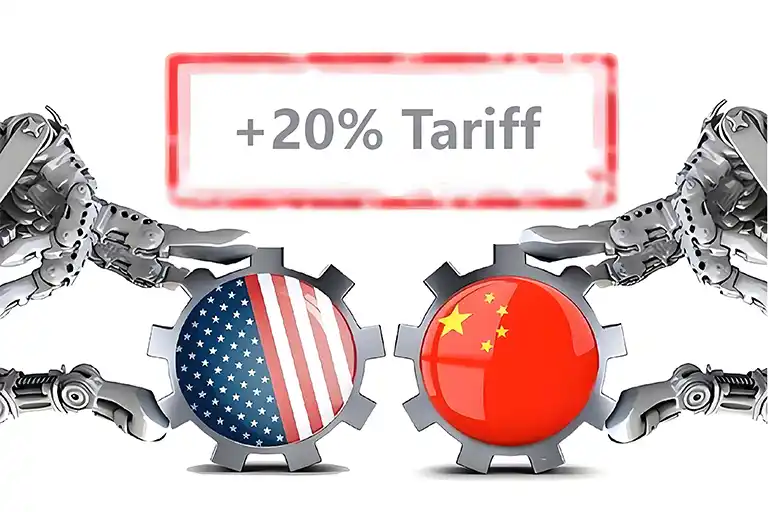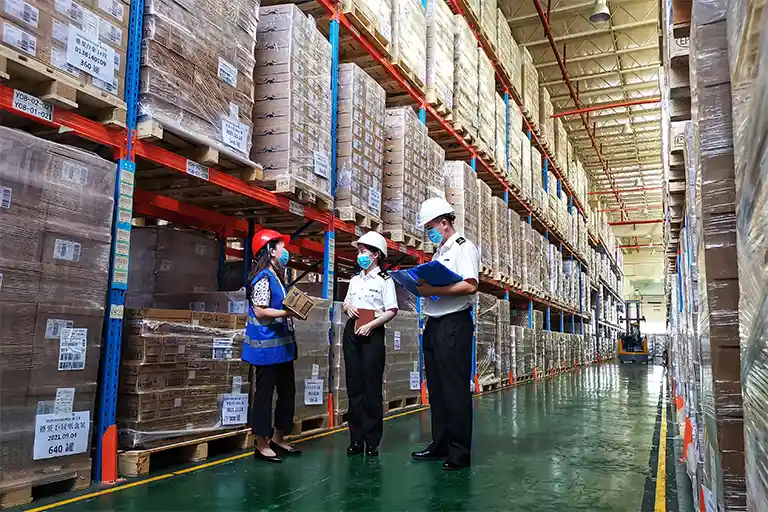The US tariff hike means importing packaging from China now costs more, creating stress for businesses sourcing overseas. Is there a way forward?
The US imposed an extra 20% tariff on imports from China1 starting March 4, significantly increasing operational costs for businesses importing packaging materials. Companies need practical strategies to offset these added expenses effectively.
Currency Battle Illustration
Below, I'll share actionable insights for businesses to continue importing packaging materials efficiently despite new tariffs.
Could shifting production partially outside of China reduce tariff costs?
Tariff hikes increase import expenses, squeezing your profit margins. Can partial outsourcing or relocation help your business maintain competitive costs?
Businesses can reduce tariff exposure by partially relocating packaging production to countries like Vietnam, Thailand, or India, which have lower or zero tariffs, thus maintaining cost competitiveness.
US-China Trade Tariff
To deeply understand this solution, let's examine how relocating or splitting production affects your supply chain.
Benefits of Partial Outsourcing:
Relocating partial production to tariff-friendly countries offers several immediate and long-term benefits:
- Cost Savings: Lower tariffs directly reduce import duties, boosting margins.
- Risk Diversification: Distributing production mitigates risks from trade disputes.
- Improved Market Competitiveness: Lower costs can provide price advantages over competitors still sourcing entirely from China.
Let's explore potential countries to consider:
| Country | Tariff Status (US Imports) | Labor Costs (Compared to China) | Logistics Infrastructure |
|---|---|---|---|
| Vietnam | Preferential tariffs | Slightly lower | Good |
| India | Lower tariffs | Considerably lower | Moderate |
| Thailand | Preferential tariffs | Slightly lower | Good |
Consider starting small, testing logistics and quality control first, then gradually expanding operations as confidence builds.
How could enhancing packaging design optimize shipping efficiency to offset higher tariffs?
Could optimizing your packaging design help mitigate these higher shipping costs?
Improving packaging design by reducing size, weight, or enhancing stackability lowers shipping expenses2, indirectly offsetting increased tariff costs and improving operational efficiency.
eco-friendly takeaway box
Better-designed packaging brings significant long-term savings. I'll explain practical steps you can implement right now. Our takeawy box with FSC certificate material. And light weight material new design can save much packing to save the shipping cost.
Actionable Packaging Optimization Strategies:
To achieve immediate savings through design optimization, consider these steps:
- Material Lightweighting: Switching to lighter, robust materials reduces shipment weight.
- Compact Design: Streamlining box shapes to reduce wasted space maximizes container efficiency.
- Stackability Enhancement: Improving design for vertical stacking increases shipping volume utilization.
Here's an example demonstrating potential savings:
| Optimization Method | Container Utilization Increase (%) | Estimated Cost Savings |
|---|---|---|
| Lightweighting | 5-10% | 8-12% |
| Compact Design | 10-20% | 12-18% |
| Stackability | 15-25% | 15-20% |
One of my customers changed their luxury rigid boxes to a flexible folding rigid boxes. This adjustment allowed them to add 30% more units to each container, significantly reducing overall transportation costs. These savings partially offset the increase in tariffs and maintained their competitiveness in the market.
Would leveraging bonded warehouses reduce immediate tariff burdens?
High tariffs increase upfront import costs significantly. Could bonded warehouses3 delay or reduce your immediate tariff payments?
Utilizing US bonded warehouses allows importers to defer duty payments4 until products leave the warehouse, offering cash flow flexibility and reduced immediate tariff burdens.
bonded warehouses
Using bonded warehouses strategically eases cash flow pressures from increased tariffs. Let's explore how this works practically.
Understanding Bonded Warehouses:
Bonded warehouses allow imported goods storage without immediate customs duties. Duties become payable only when goods enter domestic commerce. Here's why that's beneficial:
- Improved Cash Flow: Delaying tariff payments frees up cash for other business priorities.
- Inventory Management Flexibility: Goods stored safely until needed, optimizing stock management.
- Market Responsiveness: Rapidly respond to market demand without upfront tariff pressures.
Example of bonded warehouse cost savings:
| Scenario | Immediate Duty Payment | Bonded Warehouse Use (Delayed Duty) |
|---|---|---|
| Duty Payment Timing | Upon Arrival | Upon Withdrawal |
| Cash Flow Flexibility | Limited | Enhanced |
| Storage Costs | Regular storage rates | Slightly higher (offset by duty delay) |
Can improving logistics coordination minimize tariff-related delays and additional costs?
Extra tariffs increase financial pressure, especially if coupled with delayed deliveries. Could optimized logistics management reduce such risks?
Enhanced logistics coordination, through better scheduling, real-time tracking, and proactive communication, minimizes delays and extra costs related to tariff complexities, improving overall supply chain efficiency.
US-China Cargo Ship
Managing logistics more proactively provides clear benefits. Here's how improved coordination practically mitigates tariff-related costs:
Key Areas for Enhanced Logistics Coordination:
Consider implementing the following measures to better manage logistics amidst tariff hikes:
- Real-time Tracking Systems: Improved visibility to quickly handle unexpected customs delays.
- Proactive Customs Documentation: Early paperwork preparation reduces delays at ports.
- Integrated Communication Platforms: Streamlined communication prevents misunderstandings between suppliers, forwarders, and customs agents.
Here's a brief table highlighting cost-saving benefits:
| Improved Logistics Practice | Time Saved (Days) | Estimated Cost Reduction (%) |
|---|---|---|
| Real-time tracking | 1-3 days | 5-8% |
| Early Documentation Prep | 2-4 days | 7-10% |
| Integrated Communication | 2-5 days | 10-15% |
A skincare packaging client recently faced costly delays from tariff changes. By implementing real-time tracking and integrated communication, they significantly cut down on delays. They saved an average of four days per shipment, drastically reducing extra storage and detention fees.
Conclusion
Businesses importing packaging from China can counter tariff impacts by strategic outsourcing, optimized packaging design, bonded warehousing, and improved logistics coordination.
-
Understanding the implications of this tariff can help businesses strategize effectively to manage costs. ↩
-
Learn about various strategies to minimize shipping expenses, which can help businesses adapt to higher tariffs and improve profitability. ↩
-
Exploring this resource will provide insights into how bonded warehouses can optimize cash flow and reduce tariff burdens for importers. ↩
-
This link will explain the advantages of deferring duty payments, enhancing your understanding of cost management in imports. ↩





rency symbols](https://packzino.com/wp-content/uploads/2025/03/US-China-Cargo-Ship-Trade.webp)


